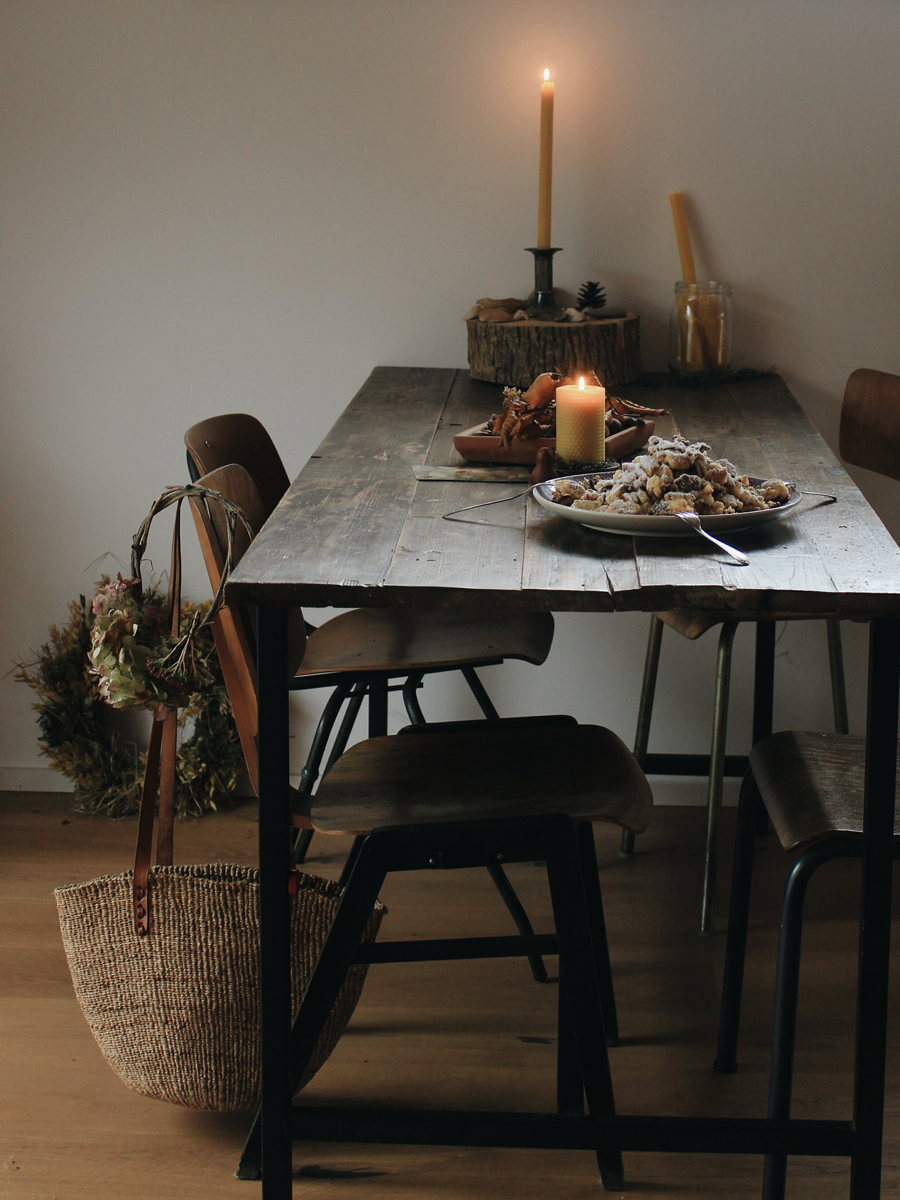
“In the Kitchen” is a series celebrating the family table––the food we eat, the spaces we inhabit, and the people with whom we share it all. Each edition welcomes a new voice to this conversation on kitchen life and food, and today, I welcome Esther Meinel-Zottl, the warm-hearted voice and photographer behind Mama to the Little Ones and My Little Treasures of Life. Esther is the mother of twin preschool girls and lives in the Bavarian Alps, where her family has established a home culture that reflects nature, especially in the kitchen. Welcome, Esther!
A lot of my childhood memories are connected to the kitchen. I grew up in the former GDR, in communistic times. My parents had four kids and we always lived in really old and simple flats. No heating systems. Only some of the rooms had ovens to heat our home, and they were fueled with black coal. We had to carry up the coal from the dusty, dark basement. That was one of our chores. The kitchen with the oven was the first room to be heated in the morning. We all gathered there and I remember that my mum used to dress us there as well. She placed pots of water or milk on the oven to heat up for breakfast, and even though the kitchen was old and simple and sometimes dusty from heating with black coal, it was my favourite place to be. I connect the warm, tender, and gentle side of my mother and father with it. Sure, we had arguments and loud discussions there as well. But when we gathered at the wooden sitting area my father built, it was the most connected feeling of togetherness, the thought “we are family”. Until now, most of our long, precious, and deep conversations take place in my parent’s kitchen. It always has been the most delightful room for me, no matter the flat they or we lived in. Even now, when visiting Oma and Opa, the kitchen is where the grandchildren run first after they wake up, and most of the time, they find their grandparents in the kitchen. It’s funny that much later I realized that we also created a wooden sitting corner in our kitchen. My husband and I both grew up with wooden sitting corners, and now we have created the same, but somehow unconsciously. 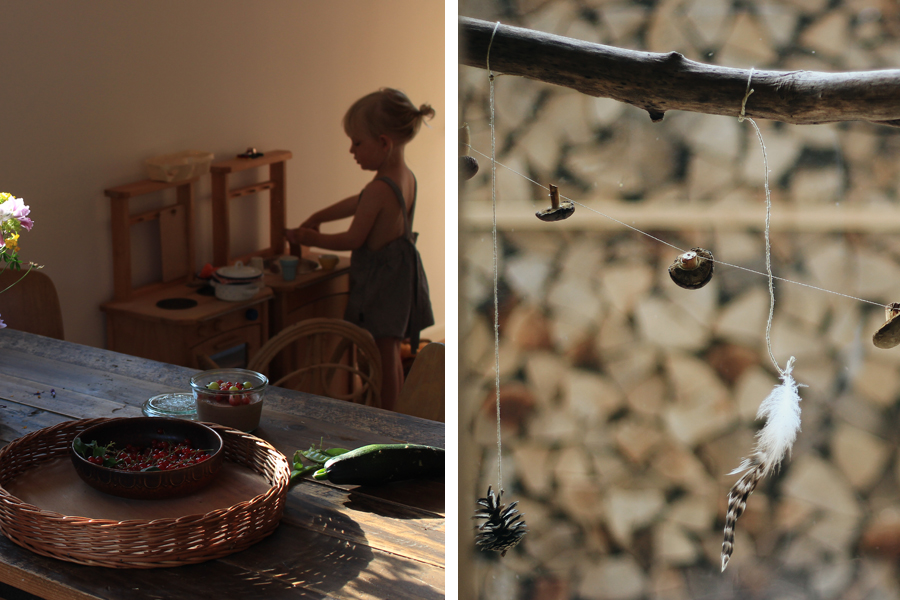
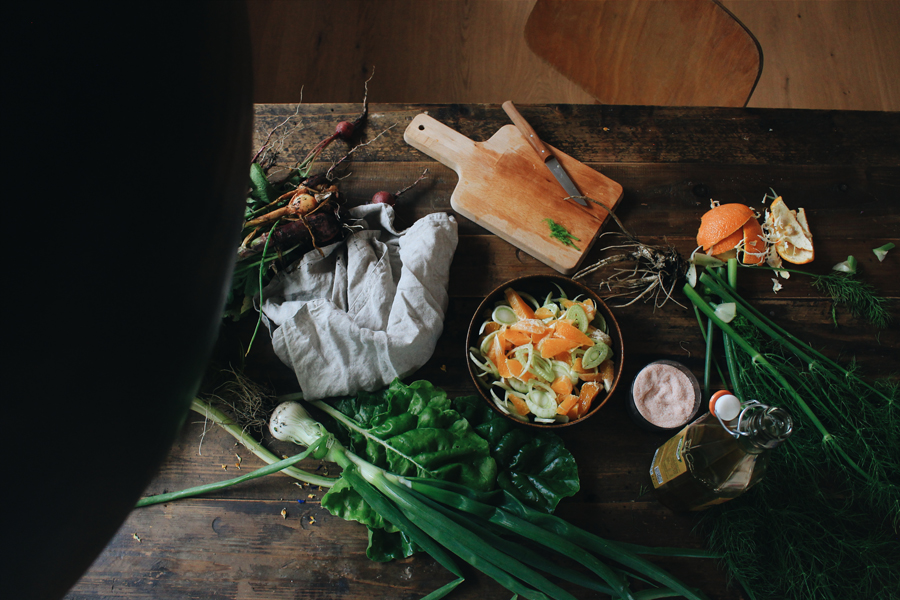
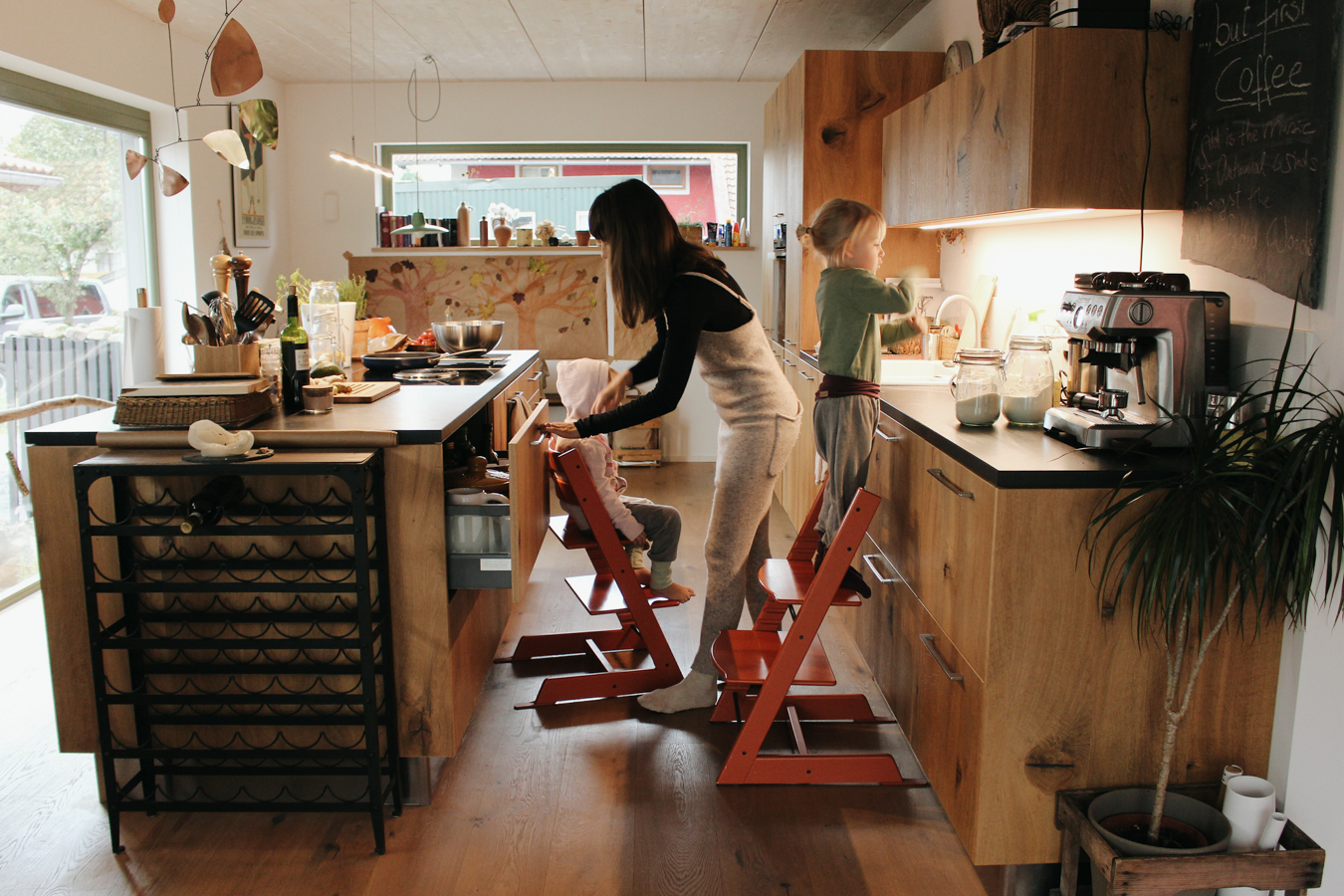
When we built and designed our house and when it came to make decisions about our kitchen, I must say that our ideas and perceptions were really high and clear. We wanted out kitchen to be the centre of our home and to be the place where we feel comfortable and at ease. We didn’t want to save money on that part of the house, where we both love to spend time cooking, baking, gathering and talking. And even though we built an ecological wooden house, we choose a kitchen with real, old wood. Oh yes, a lot of wood in our house. For us wood symbolizes warmth, our love and passion for nature and the natural things, and our value for the old. We wanted our kitchen to be spacious and connected with our living area. We wanted it to be a place where we all like to gather and spend time. 2 years later, I must say our kitchen really has become the centre of our house.
The girls have their own little wooden play kitchen in there and they spend more time playing in our big open kitchen than in their own room. Even though our kitchen might look and feel more like a living room, we of course also have the functional kitchen cupboards and corners. Some of them are easy to reach for the girls, so they can take out plates e.g. and help us prepare setting the table. When the girls were babies we bought the Stokke Tripp Trapp Highchairs, which are very often used by German families. Those wooden highchairs are so handy in many ways. Not only for the littles to sit on the table, but later on for them to push them around in the kitchen and to get up and stand up on them to reach our kitchen island or the sink, to be more independent and help out. For me, it always has been important to involve the girls as much as possible in my kitchen work. A lot of times that has meant I have way more work with three year olds around, more work cleaning up afterwards, more work because to instruct them and to let them try. But I know it that way now, and I want them to feel good and to enjoy the food we’re preparing, so I think it’s necessary. A year ago, it was more playing or ‘getting to know’ food ingredients with their textures, smells, colours and tastes e.g. when I let them be part of baking bread. Now they help wash/brush vegetables we have plucked from our vegetable field. They cut vegetables (the thick carrot slices are easily recognized) and fruits or squeeze our orange juice.
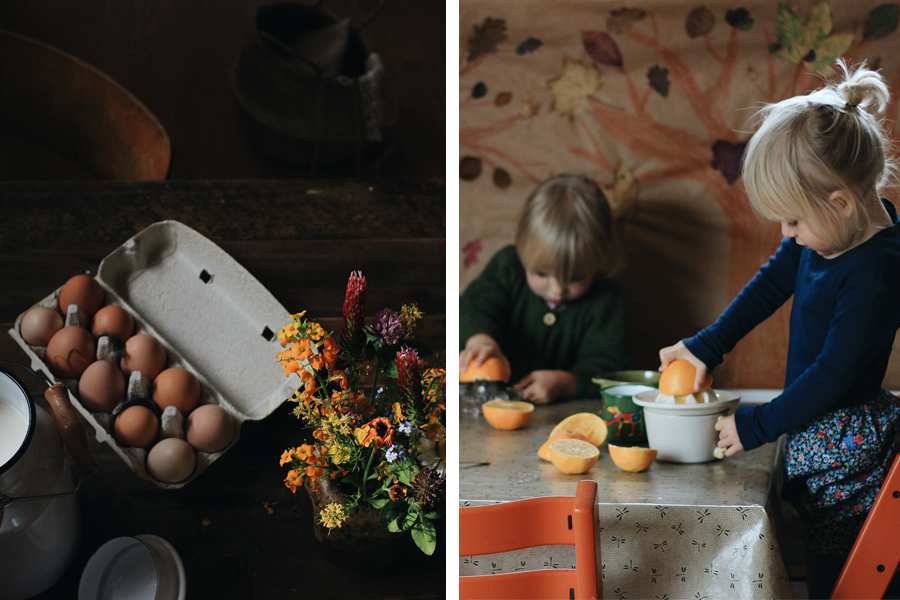

This year’s spring, summer, and autumn have been really remarkable for me. It was the first time that we planted and grew our own vegetables at our neighbour’s field. He is an organic farmer and we’re over at his farm nearly every other day. His generous offer was truly the highlight of my year. I involved the girls with sowing and taking care of the vegetables by pulling up weeds. They loved to harvest all our vegetables and the wonder in their eyes by dragging out the carrots, by trying to get the huge zucchinis, by seeing how our peppers finally turned red or by searching and digging for the potatoes… my heart was full. They didn’t even clean the dirty carrots and they ate so much soil when they ate the carrots like little rabbits. Their pride and curiosity and their naturalness of eating our home-grown veggies in our dishes surprised me. I harvested so much mangold/chard over the summer that I tried in different dishes and I didn’t have a problem to convince them to try it. Of course potatoes and carrots are still their favourites. The gardening project this year really helped me to see that its worth investing time to involve our kids in the preparation of food and in gardening. They learnt so much and we had such wonderful and delicious meals all together.
Seasonal and regional food plays a big role for us, especially now that we moved from Munich to the countryside. We get eggs from our farmer neighbour and buy their organic certified (demeter) meat. The girls and I get milk every second or third day from another farmer in our village. That has become a wonderful routine we love to combine with an afternoon walk before. We have a really good alpine dairy half an hour from where we live. We love to buy and supply ourselves with lots of good cheese and fresh butter (you get in a huge bar. I cut that bar in 5 pieces and freeze them) there once in a while. We hiked through lots of alpine meadows this summer, here in our region, where lots of the cows live during the summer and it did not only feel like in the movie of ‘Heidi’, but it was such a joy for me to see how freely the cows live and move up there, where we get our milk and sometimes our cheese and butter.

 And because our life on the countryside here in the Bavarian Alps influences our weekly routine and our kitchen life a lot, I chose a really typical alpine recipe for you. One we all love a lot.
And because our life on the countryside here in the Bavarian Alps influences our weekly routine and our kitchen life a lot, I chose a really typical alpine recipe for you. One we all love a lot.
Kaiserschmarrn is really simple and originally from Austria. There’s probably about 50 different recipes for it, but the recipe I’m going to share with you was handed to me by my sister. She uses it to make thin pancakes (almost as thin as Crèpes). So you can try it for both. We love Kaiserschmarrn and I can’t count how often we eat it. We don’t make it that often at home, but on weekends that demand a lot. We especially love to try it at different mountain huts. It has become our hiking motivation when hiking up to a mountain hut. They usually serve it. So even though we live in the Bavarian/German Alps I choose this Austrian recipe simply because it’s typical for the alpine region (no matter if in Bavaria or Austria). I have become really picky about the right consistence of the dough/batter. It shouldn’t be too eggy or too floury or too dry. Some like it with raisins, some not. Some like to eat a sort of plum compote with it, some like applesauce with it. Some like it caramelized, some flambé.
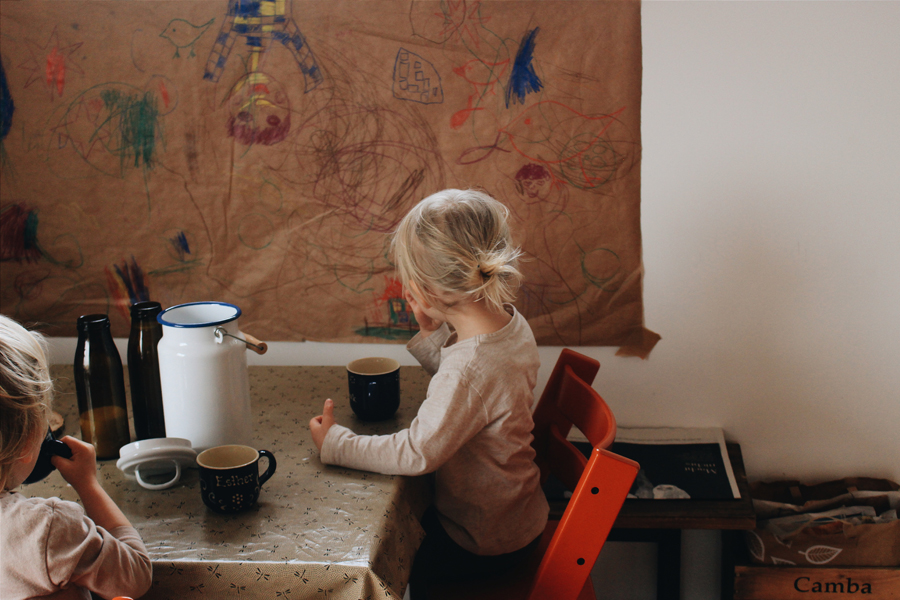
 KAISERSCHMARRN
KAISERSCHMARRN
Because I’m not the person that can go with an exact recipe (I always vary) this recipe changes as well. If I use the recipe and dough/batter to make pancakes/thin Crèpes, than I use less milk and a bit more flour. If I use the recipe for its original purpose as Kaiserschmarrn, than I use it exact like that, but I beat the egg whites and gently fold them under by the end. So all you need is:
Ingredients (serves 2 pans):
200g flour (I use spelt flour but originally wheat flour is used)
4 eggs
1 pinch of salt
750 ml milk (I mostly only use 600ml)
- Mix the milk with egg yolks and salt and slowly add the flour. After beating the egg whites, you can carefully fold it in with the rest of the batter.
- Use a big heatproof coated frying pan for the dough/batter.
- Then use quiet a lot of vegetable oil with a butter flavour or butter to gently roast it.
- Then pour in half of the batter, but don’t wonder if it’s really liquid and thin.
- I use medium heat to cook the underside until light brown, then turn over the dough using a spatula and bake/roast it again until its golden brown. (you could also bake it for 6–8 minutes in the pre-heated oven)
- Then I tear the Kaiserschmarrn into small pieces, using two forks or the spatula.
- You can now spread it out on the plates and top it with icing sugar.
I love to caramelize some nuts with maple syrup and butter that I spread over the Kaiserschmarrn before I top it with icing sugar. And as mentioned before, you are welcome to cook the Kaiserschmarrn with raisins. If you do so, just spread some over the batter after you poured it into the pan.
Enjoy your meal or as we in Bavaria/Germany would say: an Guadn, lasst’s eich schmeggn!
All images and words by Esther Meinel-Zottl for Cloistered Away. You can follow more from Esther on her blog, My Little Treasures of Life, and on Instagram, @mama_2thelittleones. Thank you, Esther!

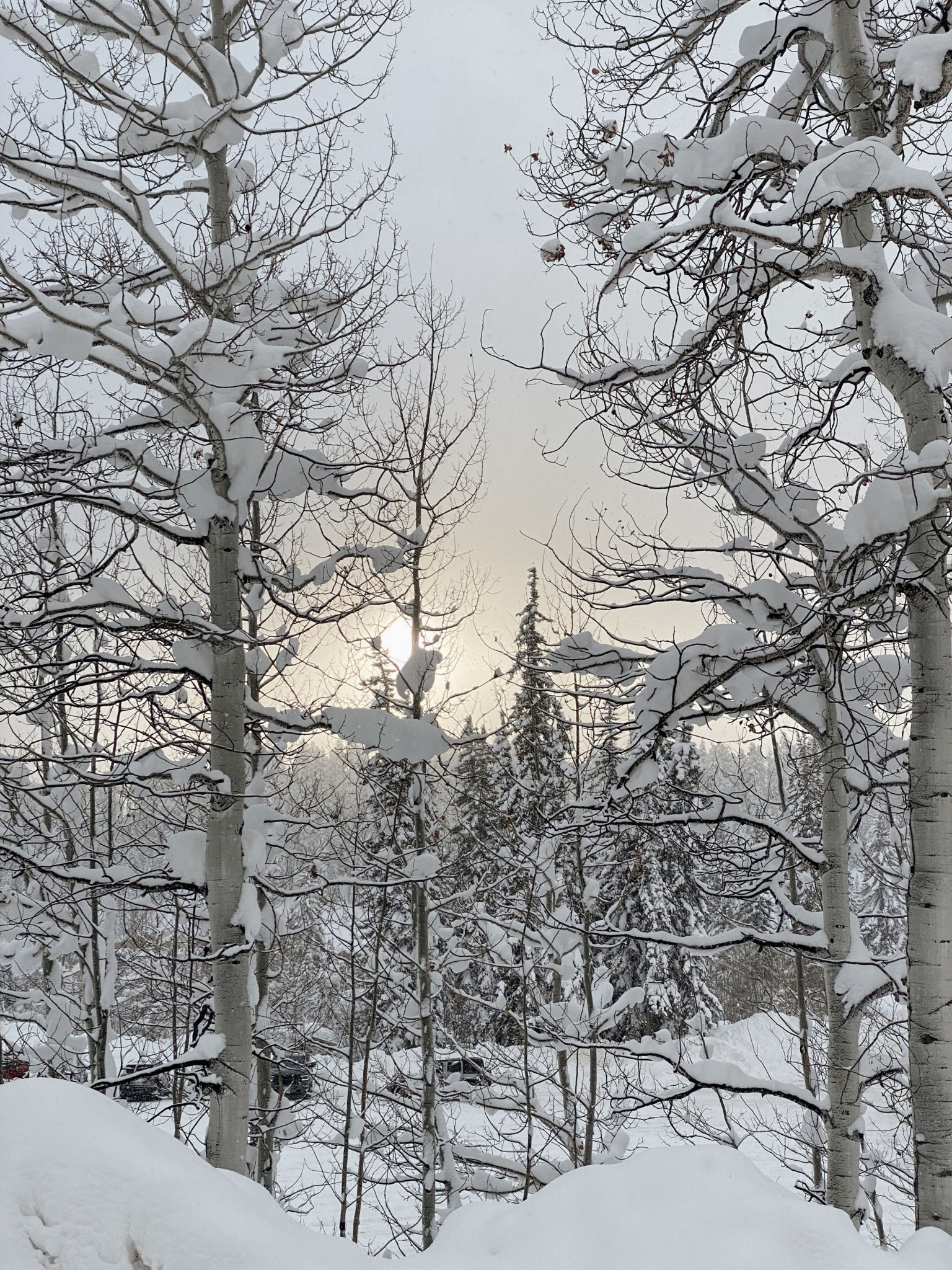


Comments
Pingback: Get the Scandi look! Why everyone should channel hygge in their home
Pingback: Get the Scandi look Why everyone should channel hygge in their home
It is alway such an inspiration to read about other food and kitchen habbits. Thank you for this! And we will surly make some Kaiserschmarren! :-)
Thank god there are women like Esther who show and tell us how to behave as good, modern parents – otherwise I would not know how to do that…
Its so restorative to know that people are choosing this kind of intentional and close-to-nature life style. Oh how enjoyed this post with Ester’s words and photos. Thanks to both women for sharing this with us. I make a similar crepe recipe that I go to for encouragement or pick-me-up, as well as to celebrate the good times.
What a beautiful post. I loved reading about Esther’s childhood, and how the love and care from her family inspired beauty, even amid difficult surroundings.
I actually had the privilege to be in this kitchen – Esther and her beautiful family really know how to comfort and welcome guests! <3
Wonderful, how lovely to share beautiful Esther’s thoughts and yes, Kaiserschmarrn is devine, I looove it too ✨
So sweet. I love this every time.